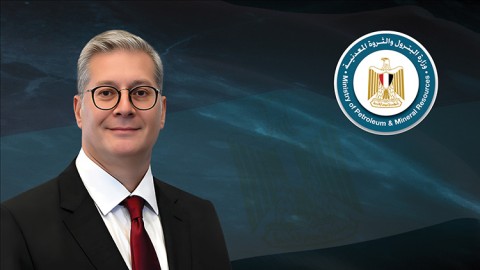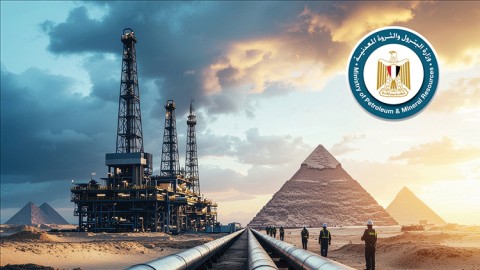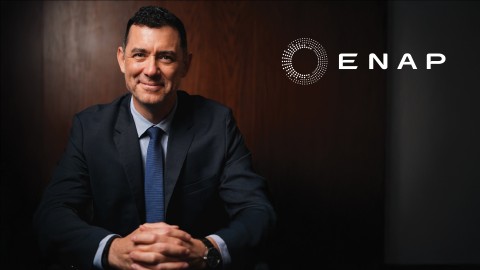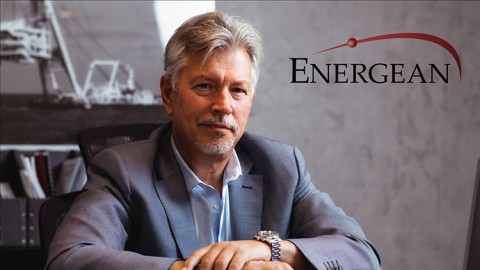Building on its commitment to promote regional cooperation in decarbonization, the East Mediterranean Gas Forum (EMGF) hosted a decarbonization workshop organized by Egypt Oil & Gas Group (EOG) under the theme ‘Leveraging Technology to Accelerate a Decarbonized Future for the East Med’.
Opening and Roundtable
Taking place on September 18th at the Royal Maxim Palace Kempinski, the event attracted many leading industry experts from the East Med and beyond to mainly focus on technologies and advances that could accelerate and enable the energy transition and abate emissions.
One of the key highlights and themes of the event was the emphasis on the close relationship between energy security and energy transition, an important area in which the EMGF plans to play a vital role, as EMGF Secretary General Osama Mobarez most eloquently put it during his opening speech, “One of our main objectives is that we are trying to strike the right balance between energy security and energy transition.”
The workshop featured a highly interactive roundtable that witnessed the attendance of Minister of Petroleum and Mineral Resources Tarek El Molla himself. During this part of the workshop, El Molla emphasized the importance of enhancing cooperation on a global scale in the face of climate change. “Facing global warming is a commitment, not only for each country but for each sector and each industry.” He also highlighted that fossil fuels will continue to play a vital role in providing societies and markets with their energy needs.
In the discussion, Mobarez also reiterated the role of fossil fuels, notably natural gas, in giving the energy transition the momentum that it needs to achieve its objectives saying, “Gas has an important role in the energy mix and will continue to play a significant role in it. So, what we need to do is supply more gas in a responsible way with low carbon emissions at a low cost.”
Focusing on the East Mediterranean as a region of great potential, EOG Founder and CEO Mohamed Fouad said “The East Mediterranean gas industry has experienced significant growth and development in recent years, positioning our region as a key player in global energy last year.”
Coming from a company that has excelled in decarbonization and climate action, Wintershall Dea Senior Vice President and Egypt’s Managing Director Sameh Sabry outlined the importance of having close cooperation not only between governments, but corporates and other major stakeholders in the region. “There is a great potential for collaboration in Carbon Management within the East Med region between IOCs, Service companies, and the governments of the region.”
Apart from the importance of natural gas and cooperation, financing was a subject of much discussion during the event, particularly for Vice President and General Manager of Apache Egypt David Chi who said, “In order for us to get where we need to get to (in decarbonization), we need both financial resources and know-how.”
Energean CEO Mathios Rigas concurred saying, “The second more important thing after collaboration, probably more important than collaboration, of course, is money. Everyone wants to talk about decarbonization and nobody wants to pay for it.”
The event also featured several decarbonization presentations delivered by representatives from various oil and gas companies that are actively working in the East Mediterranean region.
Wintershall Dea, Chevron, and Baker Hughes
Representatives from Wintershall Dea, Chevron, and Baker Hughes used this workshop as an opportunity to share their innovative ideas on decarbonization as well as their companies’ remarkable achievements in that field.
At the beginning of the presentations, Titkoon Gok, VP of Reservoir Management, Development & Engineering at Wintershall Dea delivered a presentation titled “Wintershall Dea Decarbonization Pathway”, shedding light on the company’s remarkable emissions reduction efforts and innovative approaches.
The presentation explained Wintershall Dea’s net carbon intensity ambitions, which are divided into exploration and production (E&P) ambitions and carbon management & hydrogen (CM&H) strategy. The company’s E&P ambitions include reducing Scope 1 & Scope 2 greenhouse gas emissions of upstream activities to net zero* in 2030; maintaining a gas-weighted portfolio; reducing methane emission intensity to below 0.1% by 2025; and maintaining no routine flaring commitment. Meanwhile, the CM&H strategy includes a focus on CCS and low-carbon H2, starting in NW Europe; building up a business abating 20-30 Mtpa CO2 by 2040, and phased investments directed at maturing a wide range of opportunities.
During the presentation, GOK remarked on CCS solutions for individual emitters or clusters; establishing a CO2 storage portfolio; CO2 injection green sand project; CCS evaluation in Egypt; and GHG emission reduction initiatives in BU Egypt. Wintershall Dea’s presentation further tackled Leak Detection and Repair (LDAR) solutions.
The discussed solutions include identifying high-risk areas & leak definitions; quantifying leaks; repairing/replacing worn components, and tightening connections; as well as post-repair measurements and yearly campaigns. Gok’s presentation also stated that the total number of sources identified at Disouq is 23,000++ with 36 registered leaks. All were repaired in 2022.
After GOK’s Presentation, Jonathan Lilien, Health Safety Environment & Regulatory Manager at Chevron Mediterranean Limited, made a presentation entitled ‘Chevron’s Approach to Methane Management’ addressing the company’s methane highlights.
Chevron believes that addressing methane emissions is a key part of being a responsible producer of oil, products, and natural gas. Therefore, the company has set an action plan, which is to design and operate facilities to prevent methane emissions to the greatest extent possible. Moreover, the plan includes deploying technologies to validate performance, inform repairs, and improve inventories; as well as integrating direct measurement into inventories.
Meanwhile, the presentation reviewed Chevron’s goal to pursue the 2028 target of 20 kg CO,e/boe for upstream; end routine flaring; and deploy advanced detection in all upstream operations.
In 2021, the company’s methane emissions recorded 4.5% of Chevron’s reported global equity Scope 1 emissions. Lilien’s presentation reviewed the outcome of Chevron’s methane program, which includes a 50% reduction in methane intensity since 2016; 13 advanced detection technologies trialed since 2016; 950 methane flyovers planned in the US in 2022, including 100% of Permian central facilities; 22 million components surveyed in Rockies business unit in 2020, detecting 0.01% of components leaking; and 85% lower methane intensity than US upstream production sector averages of 2020 for Chevron US upstream operations.
The presentation explained that methane management is a holistic approach to addressing methane emissions performance across multiple dimensions. This approach includes actions to reduce methane emissions intensity through facility design and operational best practices; deployment of advanced technology to detect, measure, and quantify site- and source-level emissions; and development and assurance of methane emissions inventories for reporting and disclosures.
This comes as Chevron supports the global methane pledge, in which over 100 countries have joined the effort to reduce global man-made methane emissions by at least 30% from 2020 levels by 2030.
As Lilien’s presentation came to an end, Matt Boerlage, Global Director Emissions Reduction & Carbon Monetization at Baker Hughes, focused on emissions reductions, particularly on routine flaring and technological innovations for cost-effective gas production in the East Med, during the presentation entitled ‘Solutions for Decarbonization for an Efficient and Cost-Effective Gas Production in the Eastern Mediterranean’.
Boerlage showed that Baker Hughes is committed to lowering emissions as the company has an ambition to reach net-zero carbon emissions by 2050. Baker Hughes further aims to lead in energy transition and digitalization and be a critical decarbonization partner; as well as deliver the highest efficiency, and productivity outcomes for broader energy and industry.
The presentation explained different technologies for decarbonization, from de-risking subsurface to efficient and cost-effective gas production.
Boerlage highlighted that many technical solutions are readily available, which allows the challenge to move to bespoke analysis and prioritization – the Marginal Abatement Cost Curve (MACC) helps. Moreover, Boerlage explained that hard-to-abate projects become unstuck through new collaboration models and transferrable incentives.
All the presentations at the ‘Leveraging Technology to Accelerate a Decarbonized Future for the East Med’ workshop witnessed productive and informative Questions and Answers (Q&A) sessions, as a part of the presentation sessions. During the Q&A, industry professionals got to engage and have an open discussion about carbon technologies and approaches.
SLB and Worley
With the world’s continuous dependence on and need for fossil fuels, the urgency to decarbonize energy production has grown exponentially to lessen climate change and global warming. In this regard, SLB, a global technology company, works on assisting its partners with modern technologies for decarbonization.
“Decarbonization is a paramount objective for us, not only for the oil and gas industry but also for challenging sectors like cement and steel. It’s crucial to demonstrate that a collaborative approach is the key,” said Karim Badawi Director of SLB in the Middle East and North Africa during the East Mediterranean Gas Forum’s workshop. He highlighted the company’s cooperation with Zero Emission Greenfield (ZEG) and Genvia companies in developing compact clean hydrogen plants that produce hydrogen without emitting greenhouse gases.
Referring to the company’s new logo, Badawi noted that it meant to express the SLB’s commitment to net zero emissions.
“Being a global technology company, SLB is meant to strengthen its position as a driving energy innovation for a balanced planet. Our company is committed to assisting our partners around the world to decarbonize and meet the net zero targets and beyond for a better future,” he noted.
Like many other companies, SLB works to reach net zero by 2050. But what is more important is to continue removing megatons of CO2 going into the environment as Badawi stated.
“Obviously, oil and Gas will remain part of the energy mix in the future. Hence, the focus of technological innovation would be on the oil and gas of lower carbon footprint.
“Decarbonization strategies have multiple elements, the CCUS is part of it. Our role is to help each organization identify the idealist pathway with different sources and the best solution in terms of decarbonization through digital monitoring and modeling before going into the deployment of idealist technologies.
He pointed out that SLB has decided to focus on five key areas;
1-providing CCUS solutions to industrial partners,
2- Commercializing an efficient solid oxide electrolyzer technology to produce clean hydrogen,
3- Deploying a reliable long duration and cost-effective energy storage system,
4- Deploying a sustainable direct lithium extraction and production process for faster, on-demand, and scalable battery-grade lithium production,
5-Providing low carbon, high-efficiency systems to heat and cool buildings via geo-energy and geothermal technology.
Another strategy to expedite decarbonization is Carbon Capture and Storage (CCS), a strategy that is extensively discussed by Worley, an Australian energy service company.
Nathon Smith the Director of Engineering Technology at Worley made a presentation during the EMGF Workshop in which he reviewed some of the contemporary carbon capture technologies, delving into intricate details such as feed quality, capture costs, and the factors influencing the overall cost of implementing these technologies.
In the presentation entitled “Carbon Capture Technology Routes and Projection of Future Abatement Costs”, Smith noted that Worley aims to strike a balance between cost-effectiveness and the environmental impact of carbon capture technologies. The Australian company explored the factors that influence the cost of carbon capture and provided insights into potential cost reductions that could be achieved through technological advancements and increased Technology Readiness Levels (TRLs).
“We will discuss how costs can vary depending on the maturity of the technology partner you engage with. It is important to recognize that not all CO2 sources are the same, and it’s crucial to address highly concentrated CO2 sources early on your abatement journey,” he explained.
Smith emphasized the significance of immediate implementation of such technology, as the benefits of carbon capture outweigh the waiting period for further cost reductions.
“Some forums are waiting for tomorrow’s technology for carbon capture. The point I’d like to raise is that there are numerous costs beyond the inside battery level (ISBL), and the subtleties associated with the technologies you choose have minimal impact on the total cost of abatement,” stated Smith.
“When you think about the price of technology, there’s going to be some OPEX wins and there’s going to be some CAPEX wins, but they’re going to be largely around the ISBL rather than things like CO2 compression, dehydration, some of the heat harvesting associated with the process. So, we need to be mindful of waiting for tomorrow for technology to save us. Because there’s so much cost locked up outside of the ISBL that you may never get the job done,” he continued.
While it is understandable to consider potential cost reductions before implementing carbon capture technology, waiting for such reductions may not always be advantageous, he added.








